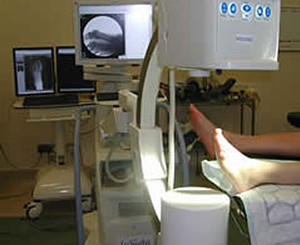Keyhole Bunion Surgery
The keyhole bunion surgery techniques of the foot and ankle were developed after Mr Palmer attended a meeting with like-minded French and Spanish surgeons in Bordeaux in 2006. Mr Palmer was one of the few English Surgeons to be trained and learn these techniques in 2007. Since then he has continued to develop his skills and his techniques with European foot surgeons. Mr Palmer has undertaken many research studies in these minimally invasive techniques for the treatment of foot and ankle problems.
The keyhole bunion surgery operation is completed as a day case procedure with a bony healing time of between 6 to 8 weeks (although swelling may last a little longer.) The procedure is performed under a light and short specialist day surgery anaesthetic. Patients can weight bear in a special surgical shoe immediately but post operative elevation of the foot is important. The surgery involves a soft tissue release and a bony osteotomy.
The “keyhole” technique has a number of benefits over traditional ‘open’ surgery, such as: -
- Less invasive
- Less Scarring
- Reduced Stiffness of the Joint
- Less soft tissue trauma
A more stable and controllable realignment is achieved, when compared with traditional bunion surgery. Stabilisation of the fixation is either achieved with a temporary titanium wire and small specially designed bone screws inserted through very small incisions. The titanium wire if required remains in place for up to 4 weeks, and then is removed very easily in the outpatient department once healing is well underway. The small screw does not usually require removal although occasionally is necessary under a local anaesthetic
Patients will be left with 2-3 small scars, from the minimally invasive incisions. Typically these will heal to less than 1cm each in size. Many other associated and related problems e.g hammer toe, arthritis can also be treated with these minimally invasive techniques.









